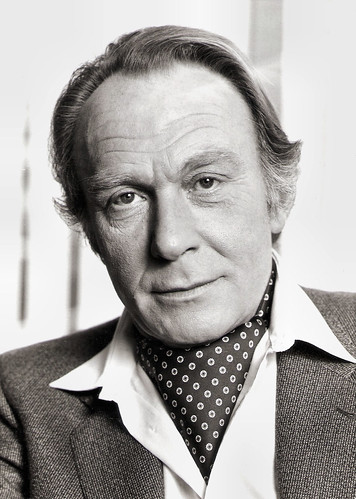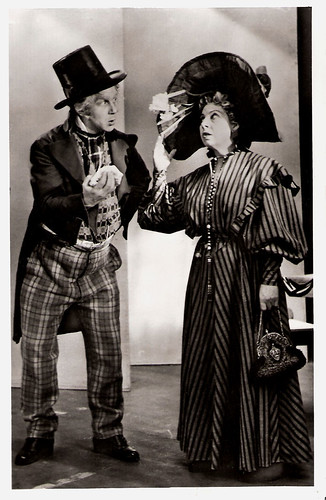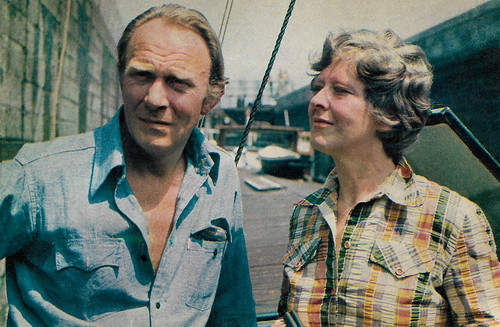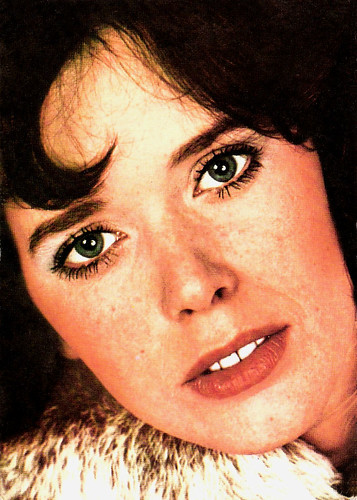
Dutch press photo by NCRV. Photo: Kippa. Kees Brusse in De verjaring/The limitation period (Kees Brusse, Andrew Wilson, 1980).
A Subdued, Natural Way of Acting
Kees Brusse was born as Cornelius Brusse in Rotterdam, Netherlands in 1925. He was the son of well-known author and journalist Marie Joseph Brusse and opera singer Antje Ebes. Kees had six brothers and half brothers, filmmaker Ytzen Brusse, journalist Jan Brusse, journalist/filmmaker Peter Brusse, sculptor Mark Brusse, the prematurely deceased Marie Joseph Jr. and architect Henk Brusse.
At the age of eleven, he made his film debut as Merijntje’s brother Arjaan in the Dutch drama Merijntje Gijzen's Jeugd/Merijntje Gijzen's Youth (Kurt Gerron, 1936), based on the popular novel written by A.M. De Jong.
Brusse attended high school, but for the theatre school, he was rejected. As an actor and as a director he was self-taught. At the age of 16, he made his stage debut as Pietje Puck in the play 'Boefje' (Rascal) (1941) at the Gemeentelijk Theaterbedrijf Amsterdam (Municipal Theatre Company Amsterdam).
A year later, he played in 'De mooiste ogen van de wereld' (The most beautiful eyes in the world) (1942). In 1943 he played at the Central Theatre led by Cees Laseur. With Laseur and Wim Ibo, he also did cabaret.
After the liberation of the Netherlands in 1945, Brusse worked in Cabaret Wim Sonneveld. With the international cabaret company of Rudolf Nelson, he made a tour in Switzerland. In the period 1948-1949, Brusse travelled with his theatre group C6 through Indonesia.
He developed a characteristic acting style. No exaggerated gestures or carried voice, but a subdued, natural way of acting. In 1948 he married his first wife, Pamela Ingenegeren (Pam Henning). Four more marriages would follow: in 1954 he married the actress Mieke Verstraete, in 1975 Marlou Peters, and in 1986 Sonja Boerrigter, and finally the Australian Joan St. Clair.

Dutch postcard van Rotterdamse Comedie, no. 153. Photo: Kees Molkenboer, Rotterdam. Kees Brusse and Elly van Stekelenburg in the stage play Fientje Beulemans/The Marriage of Mademoiselle Beulemans (1952) by Jean François Fonson and Lucien Wicheler.

Dutch postcard by Uitg. Takken, Utrecht, no. 3192. Photo: N.V. Standaardfilms. Ellen van Hemert in Jenny (Willy van Hemert, 1958).
The Third Best Visited Film of the Dutch Cinema Ever
In 1950, Kees Brusse’s film career really took off with the lead in De dijk is dicht/The dyke is closed (Anton Koolhaas, 1950), the first major Dutch film production after WW II. Frank Veenstra (a.k.a. Boba_Fett1138) at IMDb calls it ‘A surprising good humble little film’: “Beside the directing, also the acting really surprised in this movie. While some of the actors are obvious non-actors and probably just locals, the main parts are being played by some fine actors who give away a great performance.”
Brusse appeared in two acclaimed documentaries by his brother Ytzen, Hij, zij, en een wereldhaven/He, she, and a world port (Ytzen Brusse, 1952) and Het meest getapt/The most tapped (Ytzen Brusse, 1953).
From 1952 to 1954 Kees Brusse gave artistic leadership to the stage company Rotterdamse Comédie, where he worked with dramaturge Anna Blaman and his future wife Mieke Verstraete.
In 1955 he had a huge success with his role in Ciske de Rat/Ciske the Rat (1955), directed by German film-maker Wolfgang Staudte and based on the popular novels by Piet Bakker. With 2,433,000 viewers it is the third best-visited film in the Dutch cinema ever. The film was also shown at the Venice Film Festival, where it won a Silver Lion of San Marco.
Staudte also made a German version Ciske: Ein Kind Braucht Liebe/Ciske: A Child Needs Love (1955). The cast was different although Kees Brusse returned as Ciske’s teacher Bruis.
Two years later he starred in the comedy Kleren maken de man/Clothes make the man (Georg Jacoby, 1957) with Annet Nieuwenhuizen and Andrea Domburg, and then in the first Dutch colour feature, the romantic drama Jenny (Willy van Hemert, 1958), featuring Ellen van Hemert. Jenny was an updated adaptation of the oft-filmed romantic drama Eight Girls in a Boat.

. East-German postcard by VEB Progress Film-Vertrieb, Berlin, no. 2010, 1964. Retail price: 0,20 DM. Photo: Rob de Vries in De Overval/The Silent Raid (Paul Rotha, 1962).

Dutch blank back card. Kees Brusse and Dora van der Groen in Tussen wal en schip (Eimert Kruidhof, 1977).
People of Tomorrow
During the 1950s, Kees Brusse enjoyed huge successes on Dutch radio with radio plays and improvisation shows. The most successful was the biweekly series De Familie Doorsnee/The family Rate, written by Annie M.G. Schmidt and aired from 1952 to 1958.
Brusse also became known through the new medium of television. He appeared in the popular situation comedy Pension Hommeles/Guesthouse Much a-do (Erik de Vries, 1957-1959), again written by Annie M.G. Schmidt.
He played Inspector Maigret in the Dutch-Belgian crime series Maigret (1964-1965), based on the novels by Georges Simenon. Other popular TV series were Tussen wal en schip/Between two stools (Eimert Kruidhof, 1977), and Mensen zoals jij en ik/Everyday people like you and me (Rob Herzet, 1981-1985).
He was also a panellist in the game show Wie van de drie/Who of the three. Till the early 1960s, Brusse combined his TV work in the daytime with stage acting in the evening. He worked for such theatre companies as Toneelgroep Theater, the Haagse Comedie, the Amsterdams Toneel and the Nederlandse Comedie.
Already during the 1950s, Brusse showed interest in the young generation who were living in a turbulent time. He directed short films like De paraplu/The Umbrella (1956) and Het gerucht/The Rumour (1960), which advocated for sex education for young people. Brusse garnered respect as a director with his documentary Mensen van morgen/People of tomorrow (1964) in which he interviewed young people. Later he made several more documentaries.
In the early 1960s, he appeared in a few films by the ailing Dutch film industry. Both De zaak M.P./The Manneken Pis Case (Bert Haanstra, 1960) and his own feature Kermis in de Regen/Fair in the Rain (Kees Brusse, 1962) were disappointments, commercially and artistically. A huge success was the war thriller De overval/The silent Raid (Paul Rotha, 1963) with Rob de Vries and Yoka Beretty.

Sylvia Kristel. Romanian postcard by Casa Filmului Acin.

Dutch press photo. Kees Brusse in Een pak slaag/Mr. Slotter's Jubilee (Bert Haanstra, Rimko Haanstra, 1979).
Blue Movie
After eight years of TV work, Kees Brusse returned to the cinema in the soft sex film Blue Movie (Wim Verstappen, 1971), an international box-office hit and notable as the first film produced in Holland with full frontal nudity for both sexes.
Brusse also appeared in Verstappen’s dark satire VD (Wim Verstappen, 1973) opposite Andrea Domburg, and Dakota (Wim Verstappen, 1974) with Monique van de Ven and Willeke van Ammelrooy.
More interesting are Dokter Pulder zaait papavers/Doctor Pulder Sows Poppies (Bert Haanstra, 1975) with Dora van der Groen and Rooie Sien/Red Sien (Frans Weisz, 1975) starring Willeke Alberti. Other films were Mysteries/Evil Mysteries (Paul de Lussanet, 1977) starring Rutger Hauer and Sylvia Kristel, and Een pak slag/Mr. Slotter's Jubilee (Bert Haanstra, Rimko Haanstra, 1979).
In 1982, he received a prestigious Dutch TV award, the Gouden Televizierring (Golden Televizier Ring), for his TV series Mensen zoals jij en ik/Everyday people like you and me (Rob Herzet, 1981-1985). The series was based on the German TV series Leute wie du und ich, a series of short stories written by Herbert Reinecker. In each episode, Brusse played a different character, including a taxi driver, a clown, a seducer and a businessman.
He continued to appear in TV films and series, including De wandelaar/The walker (Eimert Kruidhof, 1989), the popular hospital series Medisch Centrum West/MCW (1991), and the thriller Tasten in het duister/The Right to Know (Stephan Brenninkmeijer, 1996). His final screen appearance was in the TV series De erfenis/The heritage (Johan Nijenhuis a.o., 2004) with Manouk van der Meulen.
Brusse was socially active. In addition to his work, he was an ambassador for the organization Greenwisheen, a platform for people who commit their expertise, creativity and talents to initiatives in the field of nature, environment and sustainability. He created the Kees Brusse Foundation for the empowerment of older persons. In 1987, he was appointed to Ridder in de Orde van Oranje-Nassau (Knight in the Order of Orange-Nassau).
In 1988, he moved with his fourth wife, Sonja Boerrigte, to Bonaire, France and finally Australia. After her death in 2000, Brusse returned temporarily to the Netherlands. Until January 2013, he lived in anonymity in Perth, Australia. In March 2011, he visited the Netherlands to present his biography 'Herinneringen: Ovatie aan het leven' (Memories: ovation to life).
In early 2013 Kees Brusse returned to the Netherlands for good. He stayed at the Rosa Spier House in Laren, where he died on 9 December 2013.
De overval/The silent Raid (1963). Source: Eye Filmmuseum (YouTube).
Dokter Pulder zaait papavers/Doctor Pulder Sows Poppies (1975). Source: Hugo de Derde (YouTube).
Sources: Hans Nauta (Trouw - Dutch), Annemieke Hendriks (De pioniers - Dutch), AllMovie, Wikipedia (English and Dutch), and IMDb.
No comments:
Post a Comment